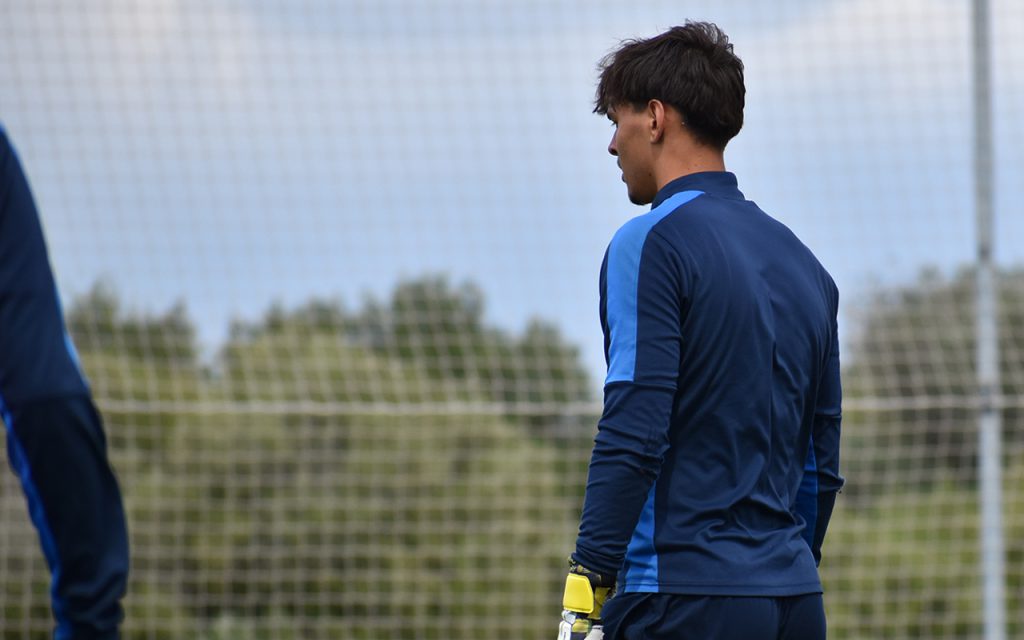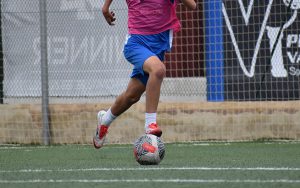Using visualization techniques for soccer is one of the most underused but highly effective tools in an athlete’s development. While physical training builds your body, visualization sharpens your mind—helping you stay confident, focused, and ready for any situation on the field.
The best players don’t just train their legs—they train their brain. And that’s why this kind of mental work is built into many top-tier training environments, football schools like IDA Valencia where players learn how to mentally rehearse moments before they happen.
So if you want to take your game to the next level, it’s time to unlock the mental edge that visualization offers. Let’s break down what it is, how to do it, and why it works so well.
Table of Contents
- What Is Visualization in Soccer?
- Why Visualization Works for Footballers
- Benefits of Visualization in Soccer
- When to Use Visualization
- How to Practice Visualization Effectively
- Example Visualization Script (for a Midfielder)
- What Not to Do When Visualizing
- How Coaches and Teams Can Incorporate Visualization
- Play the Game Before It Happens
What Is Visualization in Soccer?
Visualization, also called mental imagery, is the practice of mentally rehearsing a skill, movement, or situation without physically performing it.
It involves picturing yourself playing—seeing the ball, feeling your movement, hearing the crowd, and even experiencing the emotions that come with a game. The idea is to train your brain to respond better when the real moment arrives.
Think of it like a mental dress rehearsal: the more times you “see” success in your mind, the more confident and reactive you’ll be on the field.
Why Visualization Works for Footballers
🧠 Here’s what science and elite athletes agree on: your brain doesn’t completely differentiate between imagined and real movement. When you visualize a pass, a tackle, or a goal:
- You activate similar neural pathways as if you were doing it
- You build mental memory of the action
- You reduce anxiety and indecision before and during matches
In short, you can train without a ball—and still grow.
Benefits of Visualization in Soccer
✅ Improves focus and blocks out distractions
✅ Builds match-day confidence
✅ Sharpens decision-making under pressure
✅ Reinforces technique and positioning
✅ Speeds up reaction time through mental repetition
✅ Reduces nerves by preparing your mind for game scenarios
Whether you’re a goalkeeper anticipating a penalty or a midfielder controlling the tempo, visualization helps you arrive at the moment with clarity—not chaos.
When to Use Visualization
🕐 The best time to use visualization is:
- Before training (to set intention)
- Before matches (to rehearse moments)
- After games (to reflect and improve)
- During injury (to stay sharp mentally while recovering)
Even just 5–10 minutes a day can make a massive impact over time.
How to Practice Visualization Effectively
Let’s break it down into simple steps:
🎧 Step 1: Find a Quiet Space
Sit or lie somewhere distraction-free. You can close your eyes or focus on a blank wall. Use music or silence—whatever calms you.
🧘 Step 2: Start with Deep Breathing
Calm your nervous system before you begin. Try this breathing pattern:
- Inhale for 4 seconds
- Hold for 4
- Exhale for 6
- Repeat for 1–2 minutes
This helps shift your focus inward.
👁️ Step 3: Use All Five Senses
Don’t just “see” the play—feel it. Engage all your senses:
- 👀 Visual: the pitch, the ball, teammates
- 👂 Sound: crowd noise, the coach’s voice, cleats on grass
- 🤲 Touch: the feel of the ball, your boots
- 🧠 Emotions: the pressure, the excitement, the confidence
The more real it feels, the more powerful it becomes.
⚽ Step 4: Rehearse Real Scenarios
Pick specific moments you often face in games. For example:
- Receiving the ball under pressure
- Taking a penalty
- Organizing your backline as a defender
- Making a run behind the defense
See yourself succeeding with clarity. Then, if you’d like, visualize how you’d respond to a mistake, staying calm and correcting it. That’s growth.
🧩 Step 5: Keep It Short but Consistent
Visualization isn’t about doing one long session and forgetting it. Like any skill, it works best when done regularly.
Start with:
🕒 5 minutes before training or games
📆 2–3 sessions per week
📓 Optional: Keep a “visualization journal” to note what scenarios you rehearsed and how you felt
Example Visualization Script (for a Midfielder)
“I’m on the field, positioned centrally. The ball is coming toward me. I scan my shoulder—space is behind me. I take one touch to turn. My teammate is making a diagonal run—I thread the ball through perfectly. Crowd noise rises. My team celebrates. I feel calm, focused, and in control.”
That kind of imagery can boost confidence and reinforce smart habits.
What Not to Do When Visualizing
🚫 Don’t rush through it
🚫 Don’t only picture perfect plays—practice recovery from mistakes too
🚫 Don’t be vague. Specificity is key
🚫 Don’t skip the emotional side—include pressure and confidence both
The goal is to be mentally ready for anything, not just best-case scenarios.
How Coaches and Teams Can Incorporate Visualization
In more advanced training programs, mental skills training is treated like fitness or tactics. Coaches can:
- Start training sessions with a brief mental prep moment
- Encourage players to visualize drills before doing them
- Build match-prep visualization into team warm-ups
- Support players using tools like guided audio or journaling
That’s why structured environments actively train both the physical and mental game as part of a holistic development plan.
Play the Game Before It Happens
Mastering visualization techniques for soccer is like unlocking a mental playbook that gives you the edge before you even touch the ball. The more you train your mind to expect success—and manage pressure—the more naturally those moments will come during a match.
You don’t have to be a pro to train like one. Start now. Close your eyes, breathe, and see the version of yourself you’re working to become.
Then step on the pitch and make it real. ⚽🧠🔥




